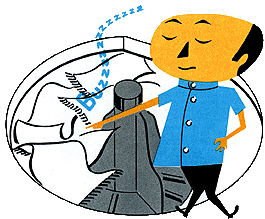|
Thread Number: 85313
/ Tag: Vintage Automatic Washers
Maytag 2 speed motor wiring and relays |
[Down to Last] |

|
Post# 1098517 , Reply# 1 11/28/2020 at 09:17 (1,336 days old) by Lorainfurniture  (Cleveland ) (Cleveland ) |
||
|
If you upload a picture of the wire diagram and the top of the motor I can probably help | ||
| Post# 1098554 , Reply# 2 11/28/2020 at 13:42 (1,336 days old) by qsd-dan (West) | ||
|
| ||
Post# 1098592 , Reply# 3 11/28/2020 at 20:20 (1,336 days old) by swestoyz  (Cedar Falls, IA) (Cedar Falls, IA) |
||
 | ||
Post# 1098609 , Reply# 5 11/28/2020 at 22:01 (1,336 days old) by robbinsandmyers  (Conn) (Conn) |
||
 | ||
| Post# 1098610 , Reply# 6 11/28/2020 at 22:11 (1,336 days old) by qsd-dan (West) | ||
|
Is it normal for them to hum like that on the lower speed? | ||
| Post# 1098657 , Reply# 8 11/29/2020 at 09:42 (1,335 days old) by sprog (Boston) | ||
Interesting Thread
Joseph, thanks for starting this thread. I look forward to seeing your progress (especially the A702!).
Dan, thanks for the video! Building on this: how does one evaluate, and clean a vintage Maytag electric 2-speed motor? I imagine there are some do's and dont's. I know solvents can ruin the windings. Are there any specific ways to test the windings (readings)? Best practice? I have a Maytag A500 (Highlander) on deck for restoration. I'd hate to inadvertently kill the motor. Please forgive if these questions reveal my inexperience. Chris | ||
Post# 1098746 , Reply# 9 11/29/2020 at 21:33 (1,335 days old) by swestoyz  (Cedar Falls, IA) (Cedar Falls, IA) |
||
Maytag Helical Drive washer two speed motor wiring
Is orange always low speed positive? - Yes Is Black always positive high speed - Yes
Is white always negative? - Yes, or neutral
Is Brown, what the heck is brown? - both Brown and Red are used by the timer to reverse the polarity within the motor, causing either agitation or spin depending on how the timer reverses the polarity, against neutral (white)
And last but not least, yellow (my emphasis) - internally within the motor, the thermal overload is wired between neutral (white) and yellow, with yellow ultimately leading back to the neutral side of the 120v service into the machine
Within the attached pictures, you'll find diagrams for a later LAT series machine (my preference), as well as the 702 wiring diagram.
Within the LAT diagram, timer contact 10 controls slow speed, with 6 being normal speed, with 2/4 acting as the motor reversing contactor against neutral.
On the 702 diagram, contact 5 sends current to the fabric control switch, along with contacts 4/6 acting as the motor reversing contactor against neutral.
Keep in mind, on single speed helical drive machines the colors change. Black ends up being the neutral back to the 120v service, with yellow calling spin and green agitation, with red working with white to reverse polarity within the timer.
Ben
This post was last edited 11/30/2020 at 00:23 | ||
Post# 1098872 , Reply# 11 11/30/2020 at 20:59 (1,334 days old) by swestoyz  (Cedar Falls, IA) (Cedar Falls, IA) |
||
Absolute answers The timer picks speeds per machine and is variable? - depending on the model, it does. Some lower to mid-level Maytag models will have multiple cycles built into the timer that call for different speed combinations for two speed models (normal agitation/slow spin; normal agitation/normal spin, etc.). Otherwise, the more TOL models with a speed selector switch/button, the timer will call the speed selector switch to pick the speed that is chosen by the user, to then feed the motor the positive to the appropriate wire, rather than having the timer do this with a hard coded cam.
Having the reversing circuity built into the timer also is a two for one - the timer can function as both an interval function timer AND the reversing contactor all in one, without having the extra expense of a separate reversing contactor. Most MFGs used two extra cams in the timer for this purpose (when the machine required reversing for either spin or agitation), and it's brilliant. I can only think of one US domestic washer that had a dedicated external reversing contactor, and that is the very early 50's H-axis Horton Robert recently found.
Ben | ||
| Post# 1098874 , Reply# 12 11/30/2020 at 21:16 (1,334 days old) by Sudster () | ||
|
Brilliant!!! Ben , One last question for now, That 1-1/2 gap between the tub cover & top in the picture by swapping the interior to the A806. My thoughts involve using a long A108 transmission with the A806 deep tubs to make up that gap--Your thoughts please?-thanks,Joe | ||
Post# 1098876 , Reply# 13 11/30/2020 at 21:42 (1,334 days old) by swestoyz  (Cedar Falls, IA) (Cedar Falls, IA) |
||
The Maytag gap The gap exists due to the difference in height produced by the 06 and later series base, vs the earlier 00/02 series bases, and in trying to use an 06 and later guts inside an 00/02 and earlier cabinet. No parts combination of various transmissions or tubs or tub brace is going to make up for the gap.
The black large capacity poly agitator is actually pretty rare these days. It came from a large capacity commercial Maytag from the 70's, which weren't common even then.
This machine will have that gap in place unless you find an 00/02 series machine and swap the base/trans/tub from the donor machine under the turquoise 702 cabinet, but you'll loose the large capacity tub.
Ben | ||

 Comes to the Rescue!
Comes to the Rescue!